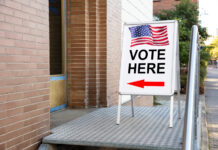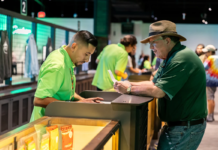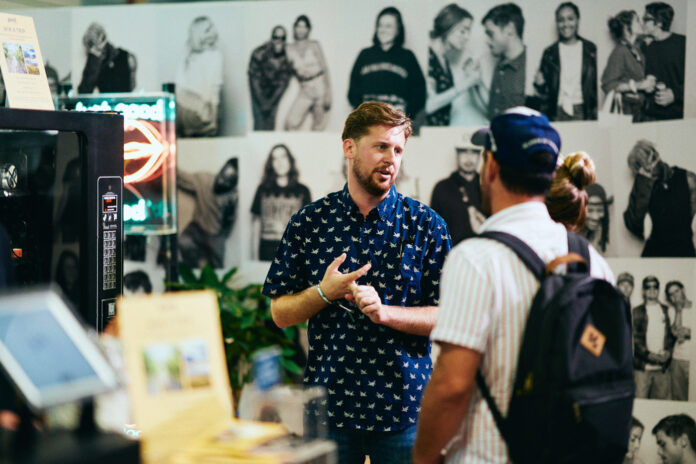The cannabis industry is in the midst of having to come to terms with the effects of oversaturation with seemingly countless brands and dispensaries vying for valuable shelf space and consumer attention. In this highly competitive era of legal weed, it’s vital for brands and retailers to collaborate on a united front that results in a profitable win-win for all parties involved.
A simple strategy that has largely fallen to the wayside since the early days of the legal industry is developing strong budtender-brand relationships that can drive significant sales.
When cannabis was first reaching for legitimacy and acceptance, brands were more adamant about engaging in ambassadorship programs that put their people and products on the radar of retailers and consumers alike. Unfortunately, many brands seem to have forgotten about the importance of building and nurturing this critical retail relationship, and it’s a factor that may have a make-or-break quality for struggling brands moving forward.
The Importance of Budtender-Brand Relationships
When building a winning cannabis brand, the most experienced teams will do their best to tap into the following: understanding their target audience and how to appeal to them in the best way possible.
More sophisticated or experienced brand creators will go further with it, imagining how they might simultaneously appeal to retailers populating their dispensaries with the products their target demographic is most commonly after.
However, a lot of brands are missing a third and absolutely essential step to the equation: working to appeal to budtenders—the influential faces behind the retail counter with the power to greatly influence consumer purchase decisions.
Although it’s considered an entry-level position in the cannabis industry, budtenders are truly the heart and soul of a retail location. These employees act as the face of the dispensary, the highest source of education for walk-in consumers, and faithful ambassadors to the products they know will be the best fit for every ailment or consumer need.
Because of this, budtenders must be up to date on all things cannabis education, from the ins and outs of the plant and all of the science behind it to the hottest brands on the market and the variety of benefits they might bring to interested consumers.
“In our experience, cannabis brands need to appeal to three main audiences: retailers who can stock their product, consumers who can purchase their products, and budtenders who promote their products and educate consumers,” said the general manager of brands at Weedmaps, Michele Cheowtirakul.
“The educational aspect is very important, given that 51 percent of cannabis consumers would not consider themselves as being proficient in cannabis knowledge. Budtenders can play a key role in supporting consumers to make informed purchasing decisions.”
How to Build Lasting Brand-Budtender Relationships
As consumers become more educated on the plant and how it might improve their quality of life, brand loyalty will become much more common in the space. This means brands need to put in the work now to build that relationship—and that can happen most effectively by starting with the budtenders.
“Right now, there is a huge opportunity for brands in the space to capitalize on rising brand affinity and begin to build a loyal customer base. While just over half [54 percent] of consumers have identified a favorite brand, just under half of consumers surveyed had not yet chosen their brand preferences,” Cheowtirakul said.
“There’s still time to build loyalty with this market segment. I would advise brands to consider what consumers they want to appeal to, and then develop a marketing approach that is aligned to customer affinities and needs.”
Of course, there are plenty of ways for brands to establish this sort of loyalty with budtenders, and incentive-based approaches are quite common, especially with brands that have big budgets.
However, Cheeba Chews CMO and co-owner Eric Leslie believes nothing works as effectively and earnestly as “just being earnest.”
“We’ve been around since 2009, and as a result, we’ve been through lots of maturation and evolution within the industry. But despite all of the changes, direct and consistent engagement with our partners has remained a baseline for us—making sure they know the people they’re working with,” Leslie said.
“The industry has become very busy. Everyone wants to connect and build a relationship. It’s gotten loud. As we saw more brands come into the space with more mature tactics, like pay-to-play, taking teams to baseball games, industry events, etc., it became even more clear to us that the foundational approach is essential.”
Leslie views the other methods of relationship building as effective in the short-term, but for long-lasting loyalty with a strong base, connecting intimately, honestly, and preferably in person is essential.
“It’s important to us to find unique ways to genuinely connect with budtenders on a 1:1 level— like our budtender tours, where we take them through our facilities so they can see our investment, our process, and the delicate nature in which we go about doing what we do,” Leslie said.
“We’ve never been loud about it; we stand behind the philosophy of letting our products speak for themselves. It’s irrefutable that this approach is extremely effective. We do follow-ups with the budtenders after the tours, have them sample products, and ask their perspective on which flavors to lead with. The feedback we get isn’t just positive—it’s budtenders telling us we provided them with a deeper understanding of what we do, which in turn makes them feel stronger in their advocacy for our brand to consumers.”
COVID-19 forced this style of in-person engagement to take a backseat for several months, but as people have grown more comfortable getting back out there, it’s time for brands to reignite the one thing that can’t be bought or imitated by technology: face-to-face experiences.
“It’s not just about making that engagement—it’s about fostering relationships. Budtenders experience high turnover and a fast work pace, so as a brand, you have to really stay engaged and genuinely make that effort in building relationships,” Leslie said.
“Do the work, give that face-to-face time where you can, and be honest. Don’t lean on tools and incentives. Short term, it’ll move the needle, but that type of advocacy won’t be genuine in the long run. When you’re done spending your money, they’ll be done selling your product. Build deeper ties and you’ll have long-term success.”










[…] a retailer carries must be addressed when purchasing, counting inventory, analyzing shelf space, educating budtenders, and so on. Merchandising thousands of SKUs effectively is extremely […]
[…] buyers at other dispensaries began to embrace the idea of low-dose beverages as they saw the considerable traction starting at […]
[…] of 2022, approximately 46 percent of U.S. cannabis consumers had not yet identified a preferred brand. This creates a significant […]
[…] reps come to understand how a store communicates with customers, they can tailor a pop-up to fit the store’s approach. For example, a store may […]